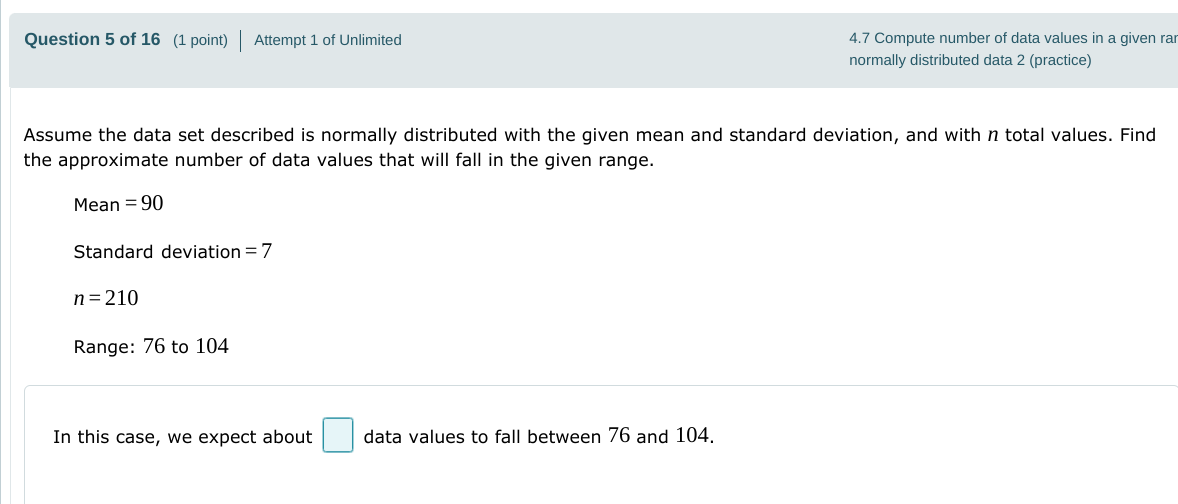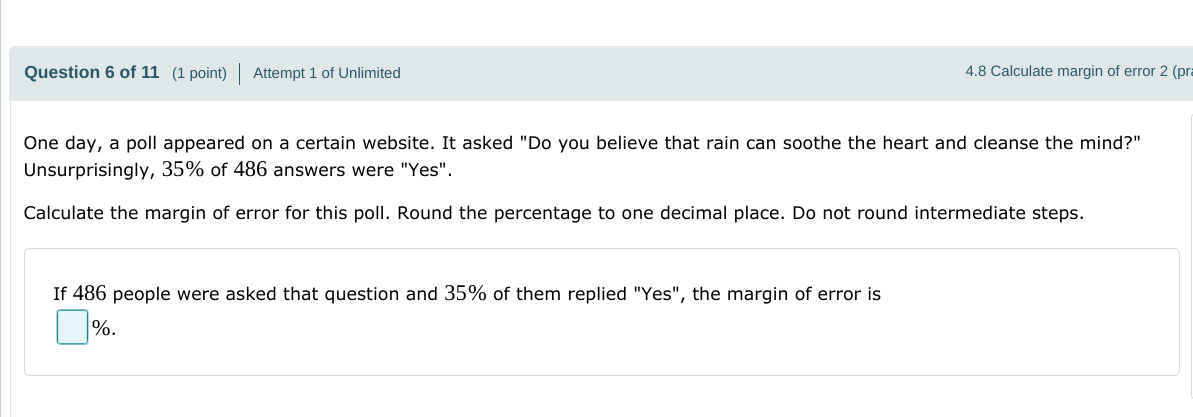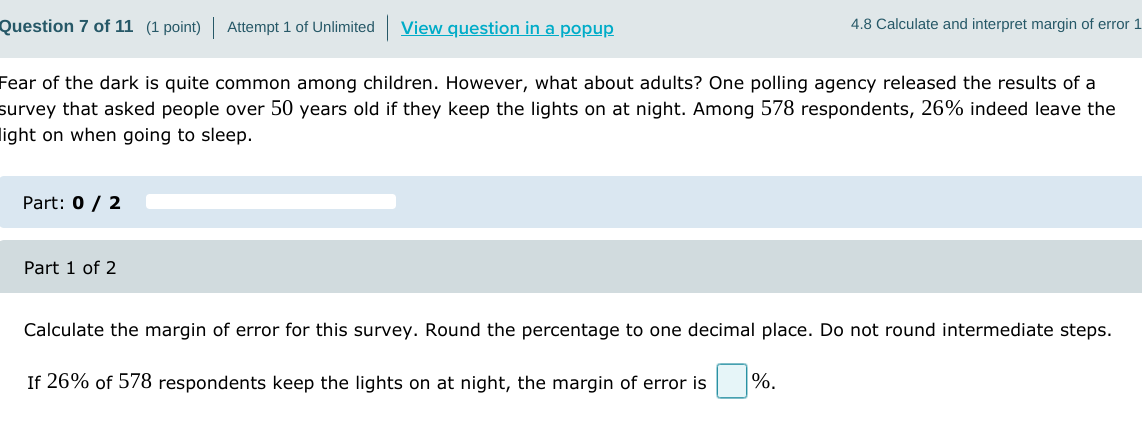math 143....///////
Question 5 of 16 (1 point) | Attempt 1 of Unlimited 4.? Compute number of data values in a given rar normally distributed data 2 (pracce) Assume the data set described is normally distributed with the given mean and standard deviation, and with n total values. Find the approximate number of data values that will fall in the given range. Mean =90 Standard deviation = 7 n = 210 Range: 76 to 104 In this case, we expect about D data values to fall between 76 and 104. 4.? Compute number of data values in a given rang Question 6 of 16 (1 point) | Anempl 1 of Unlimited normally distributed data 3 (practice) Assume the data set described is normally distributed with the given mean and standard deviation, and with n total values. Find the approximate number of data values that will fall in the given range. Mean =400 Standard deviation = 29 n = 550 Range: 313 to 487 In this case, we expect about C] data values to fall between 313 and 487. Question 5 01 11 (1 point) l Attempt 1 of Unlimiled 4.8 Calculate margin of error 1 (prac A survey was conducted to determine if people believe in afterlife. After surveying 440 people between the ages of 3D and 35, it was found that 13% of them do believe in afterlife. . Calculate the margin of error for this survey. Round the percentage to one decimal place. Do not round intermediate steps. I If the survey asks 440 people and finds that 13% of them believe in afterlife, the margin of error is 8%. I Question 5 of EU. (1 point) ' Attempt 1 of Unlimited 4.8 Calculate margin of error 2 (pr: One day, a poll appeared on a certain website. It asked "Do you believe that rain can soothe the heart and cleanse the mind?"I Unsurprisingly, 35% of 486 answers were "Yes". Calculate the margin of error for this poll. Round the percentage to one decimal place. Do not round intermediate steps. If 486 people were asked that question and 35% of them replied "Yes", the margin of error is E]%. Fear of the dark is quite common among children. However, what about adults? One polling agency released the results of a survey that asked people over 50 years old if they keep the lights on at night. Among 578 respondents, 26% indeed leave the light on when going to sleep. Calculate the margin of error for this survey. Round the percentage to one decimal place. Do not round intermediate steps. If 26% of 578 respondents keep the lights on at night, the margin of error is D%











